#St. Hubertus
Explore tagged Tumblr posts
Text
St. Hubertus gehört zu den ganz wichtigen Archetypen und dürfte den Platz eines vorhergehenden keltischen Gottes eingenommen haben. Die Gegend - Ardennen- von wo sich seine Verehrung ausbreitete ist auch heute noch von dichten geheimnisvollen Wäldern gesäumt. In wenigen Tagen , am 3. November, ist sein Gedenktag.
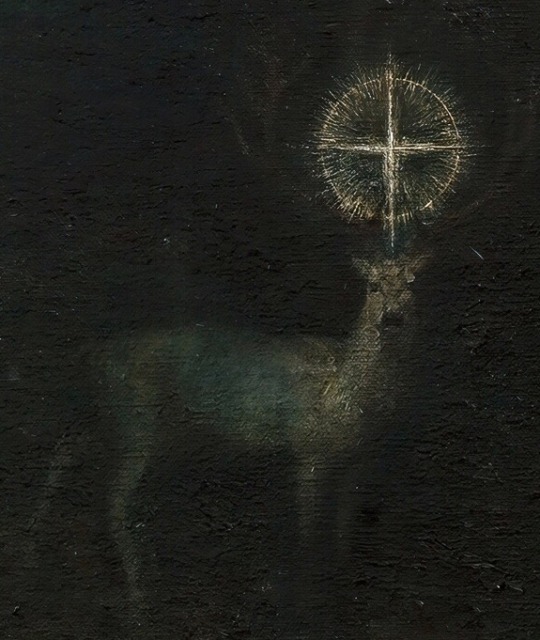

The Vision of Saint Hubert (1890)
— by Franz von Stuck
12K notes
·
View notes
Text
A természet varázsát közvetíti a St. Hubertus új kampánya
A természet varázsát közvetíti a St. Hubertus új kampánya
0 notes
Text
Glaube und Jagd
von Harald Schweim Unter Gläubigen, Christen, Juden und Muslimen und auch vielen Atheisten herrscht die Einsicht vor, dass die Natur – und damit für Gläubige die Schöpfung – dem Prinzip des Fressens und Gefressen-werdens folgt. Solche Weltsicht haben die Weltreligionen gemeinsam, Christen- und Judentum und auch der Islam. Die Behauptung, dass das Gebot „Du sollst nicht töten“ unumstößlich und…

View On WordPress
#Bibel und Jagd#Christentum und Jagd#Glaube und Jagd#Harald Schweim#Islam und Jagd#Jagdblog#Jugentum und Jagd#Koran und Jagd#Prof. Harald Schweim#Religion und Jagd#Sankt Hubertus#St. Hubertus#Thora und Jagd
0 notes
Text
@eucatastrophicblues

Franz von Stuck
Die Vision des heiligen Hubertus
1890
3K notes
·
View notes
Text
HUBERTUS-MESSE IN DER ST. GEORGS-KIRCHE
Hubertrus-Messe: Der Hegering Hattingen lädt ein.
Hattingen – Am kommenden Donnerstag, 02. November 2023, lädt der Hegering Hattingen um 18:30 Uhr zu einer Hubertusmesse in die St. Georgs-Kirche auf dem Kirchplatz ein. Der Hegering Hattingen, die Jägerschaft der Stadt, veranstaltet diese traditionelle Hubertusmesse mit Pfarrer Dr. Udo Polenske und mit vielen Jagdhornbläsern. Die musikalische Gesamtleitung dieser Messe übernimmt der in der…

View On WordPress
0 notes
Text

Church St Hubertus (1959) in Krefeld, Germany, by Heinz Dohmen
97 notes
·
View notes
Photo

Elizabeth McGrath, The Folly of St. Hubertus, circa 2011 Sculpture
https://elizabethmcgrath.com/
#hannibal#nbc hannibal#art that reminds me of hannibal#antlers and ravenstag and animal symbolism#sculpture#contemporary art#elizabeth mcgrath
259 notes
·
View notes
Text

Jachtslot St. Hubertus by H.P. Berlage, park Hoge Veluwe, Netherlands
3 notes
·
View notes
Text

(edited sprint piece, 500 words, partly inspired by this book & paper)
The ice chest sat next to the hotel bed, covering a hole in the three layers of plastic wrap. He looked at it while the surgeon prepared, and hoped she wouldn't do any more checks to see if he was sure.
Even he'd assumed it was insomnia until he'd noticed mirrors had a color. It was a putrid color, at that - a higher octave of beige, only more damnably bright than the others.
"There aren't any medical texts for this, of course," she explained, shrugging off a layer of baggy casualwear and revealing full scrubs with plastic gloves taped to them. "It's a bit like those marriage drive-thrus in Vegas. Do they still have those? Anyway, you'll want to avoid doing any physicals from now on."
At night, stars had become suns again, while moonlight smeared the air and made it into fog. The moon itself didn't wane for him, but when its light was fainter it became almost tiger-striped with infrareds that rhymed with orange and green.
Next had come the clicking from the outdoors, a bomb or a loom hushed only by the rain. The sound of more letters being forced into his box in the lobby by someone cursing under their breath. Spiders became hydraulic and pistoning, snapped branches became wet telegraphs, and a universe of tiny, churning mouths vibrated the concrete under his feet.
The cravings had clarified the rest.
In the hotel room he laid back - sparing the details - and stared at the popcorn ceiling, thinking distantly of canopic jars. It was a wonder to him that this, this alone, should be so sensationless.
When the work has halfway done the ice chest was opened and gave a long, droning sigh as the surgeon lifted four containers and twisted four seals. For him it was hard to tell them apart except for size, but each smelled like mud or railroads or lifelong, prickling fear.
The group had already told him that rabbit, elk, pig and falcon were the traditional hearts for starting someone off. They'd also given him a warning, that his life depended on knowing which things kept and which would go sour. Which, he suspected, was just their segue to telling him he'd be paying in favors and not cash.
Rabbit, elk, pig, falcon. There was room for them, now, and as each was attached and resumed its operation he felt more - awake? The present contracted and expanded in the same motion, somehow - finer-grained but across a broader surface. All four beat in separate rhythms, syncopating in pairs and flirting in triplets until they joined in a crescendo on the half-hour mark.
"And - that's it?" he asked as the surgeon closed him up.
She placed the sewing needle between her teeth and made a 'so-so' gesture with her hand. "Reason these are standard is they go bad in about five years. Make nice with the right people and show you keep your favors and that won't be a problem. If that's not you, figure something out."
"Is stuff like this how you do it?" he asked.
She shook her head. "I made friends with the Order of St. Hubertus."
She declined to elaborate on that.
2 notes
·
View notes
Text
Fedezd fel Magyarország varázslatos tájait és koccints a barátságra a St. Hubertus-szal!
Fedezd fel Magyarország varázslatos tájait és koccints a barátságra a St. Hubertus-szal!
Hazánk rejtett kincseit mutatja be a St. Hubertus háromrészes sorozata, amely rámutat az ember és a természet közötti harmónia fontosságára. Szarvasbőgés: A horgász: operatőr: Stiller Ákos
0 notes
Text
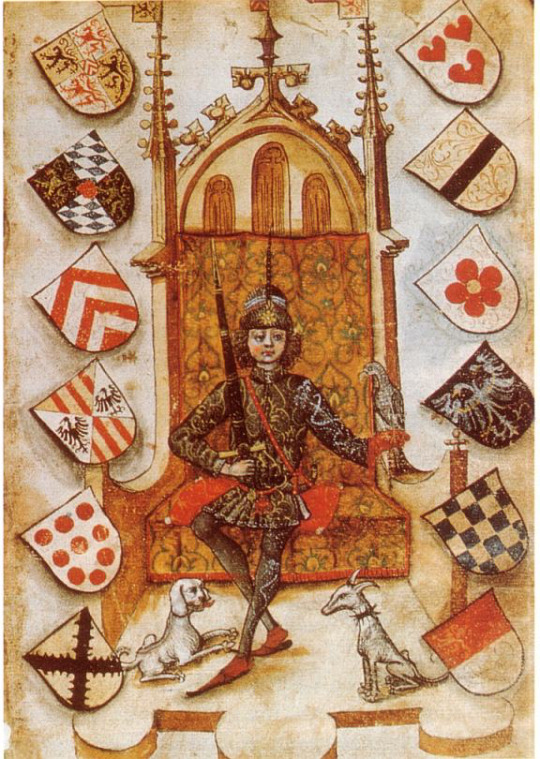
Duke Gerard II of Jülich-Berg, founder of the Order of Knights of St. Hubertus, German, 1480
5 notes
·
View notes
Text
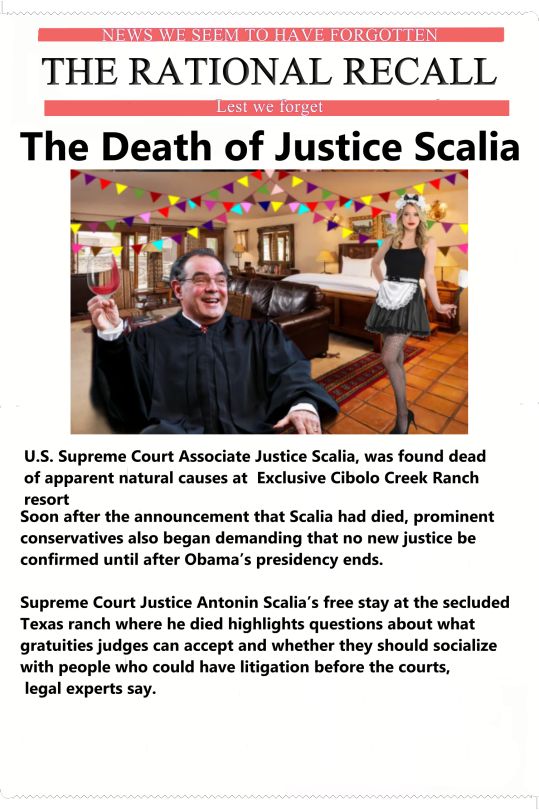
WHEN ANTONIN SCALIA WAS FOUND dead at Cibolo Creek Ranch in a remote area of West Texas, officials said then that Scalia was there at the invitation of the ranch’s owner, John Poindexter.
Most of his companions, numbering a dozen or so, were not publicly identified.
Would you believe us that it was because they are members of a centuries-old, all-male, secret society of elite hunters?
It emerged Wednesday that among those people, however, were, in fact, members of a centuries-old all-male secret society of elite hunters, known as the International Order of St. Hubertus, the Washington Post reported. Scalia himself does not appear to have been a member, though the Post reported that Poindexter and C. Allan Foster, a prominent lawyer, held leadership positions in the group. Foster had traveled by private plane to the ranch with Scalia.
Scalia spent the night of February 12th with Foster, Poindexter and others at the ranch, eating dinner with Poindexter before retiring to bed and later dying in his sleep. It’s unclear what ties Scalia had to the order, though Poindexter said that he had “no connection” to the group.
“There is nothing I can add to your observation that among my many guests at Cibolo Creek Ranch over the years some members of the International Order of St. Hubertus have been numbered,” Poindexter tells the Washington Post. “I am aware of no connection between that organization and Justice Scalia.”
The ranch, known for its remoteness and discretion, would be appear to be a good fit for the secretive order, which was founded in 1695 by Count Franz Anton von Sporck in the Kingdom of Bohemia, or what is now the Czech Republic, according to its website, which also outlines a colorful history for the all-male group.
The order was banned by Hitler in Germany after refusing to accept Nazis as members, their website says, also claiming that members of the order hunted food for rural populations in Austria during World War II, “avoiding not only famine but helping to save the country to falling behind the Iron Curtain.”
The order appears to touch on many of Scalia’s interests, which included not just hunting but also opera.
“Count von Sporck was also a prominent patron of music, having commissioned numerous Vivaldi operas and the four Bach minor Masses for performance at his private Opera House in Prague,” the order’s website says.
The order is named for St. Hubertus, the patron saint of hunters, as well opticians, mathematicians, and metalworkers. Its motto is “Deum Diligite Animalia Diligentes,” which translates to “Honoring God by honoring His creatures.”
The United States chapter of the order was established in 1966 at San Francisco’s Bohemian Club, which hosts Bohemian Grove, one of the most famous secret societies in the world.
The ranch, which has also hosted other politicians and public figures over the years, including Mick Jagger, has hosted the group before.
In 2010, CultureMap Houston reported, the ranch hosted 53 members for a hunting expedition.
“Poindexter reports that some of the players went so far as to dress in traditional European shooting attire for the boxed bird shoot competition and for the driven pheasant and chukar shoot, highlight of the sporting events,” CultureMap Houston said.
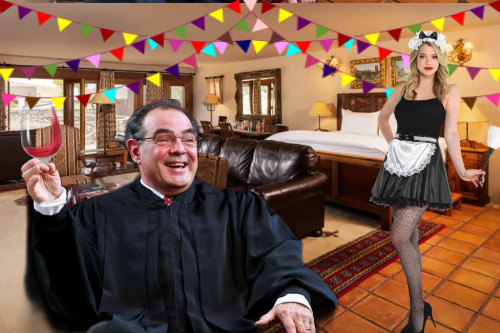
#us supreme court corruption#supreme court#political corruption#plutocracy#sup0reme court justice ANTONIN SCALIA
7 notes
·
View notes
Text
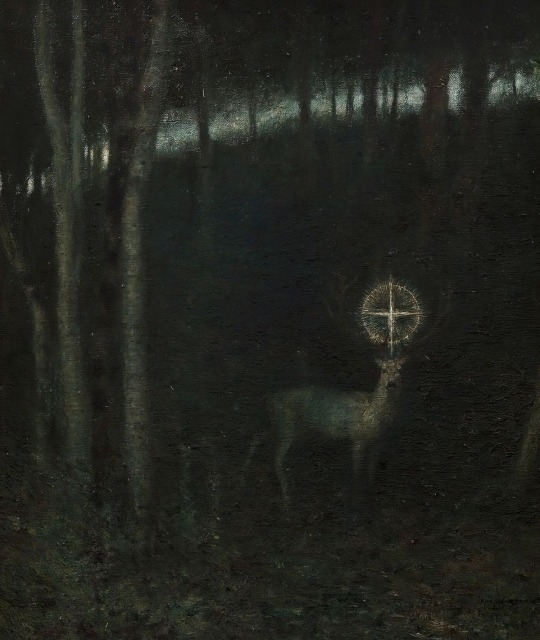
The vision of saint Hubert by Franz Von stuck 1890
St. Hubert is also known as St. Hubertus. A married courtier with a passion for hunting
Legend holds that on a Good Friday morning, while the faithful were in church, Hubert was hunting in the forest. As he pursued a magnificent stag or hart, the animal turned and Hubert was astounded to see a crucifix floating between its antlers. He heard a voice saying: "Hubert unless thou turnest to the Lord and leadest a holy life, thou shalt quickly go down into Hell." Hubert dismounted and prostrated himself, and after asking "Lord, what wouldst Thou have me do?" is told, "Go and seek Lambert, and he will instruct you.
He is known as the patron saint of hunters, dogs, and archers. Among sport hunters he is credited as the source of ethical hunting behavior. He is recognized as the 1st bishop of Liege, and was a evangelistic bishop reaching out to the pagans along the Ardennes Forest
2 notes
·
View notes
Text

“His Serene Highness Prince Albert II, 12th Prince of Thurn und Taxis, Prince of the Holy Roman Empire, Member of the Holy Roman Empire Association, was born in Regensburg on the 24th of June in 1983. He completed his school education from 1993 to 1998 at the private Pindl grammar school in Regensburg and from 1998 to 2003 at the German School in Rome, where he passed his university entrance qualifications. Prince Albert studied economics and theology at the University of Edinburgh from 2004 to 2008, graduating with a Master of Arts. He trained as a chartered financial analyst in Zurich from 2008 to 2010. Afterwards he enrolled in a degree course in philosophy at the Pontificia Universitas Studiorum a Sancto Thoma Aquinate in Urbe in Rome, completing his doctorate in 2022.
In 2005, Prince Albert was admitted to the Order Coeur Royal de Jesus Souverain Pretre and to the Royal Order of Saint George for the Defence of the Immaculate Conception. He has been a member of the Order Constatiniana de San Jorge y de real de San Genaro since 2007, the Order of the White Deer of St. Hubertus since 2008 and an honorary Knight of the Sovereign Order of Malta since 2010.
As head of the Princely House, he holds the Thurn und Taxis House Order De Parfaite Amitié. He last awarded it in 2010 to the Grand Master of the Order of Malta, Sir Matthew Festing, and to the Apostolic Protonotary, H.H. Prelate Dr Wilhelm Imkamp. www.HolyRomanEmpireAssociation.com.”
From FB
0 notes
